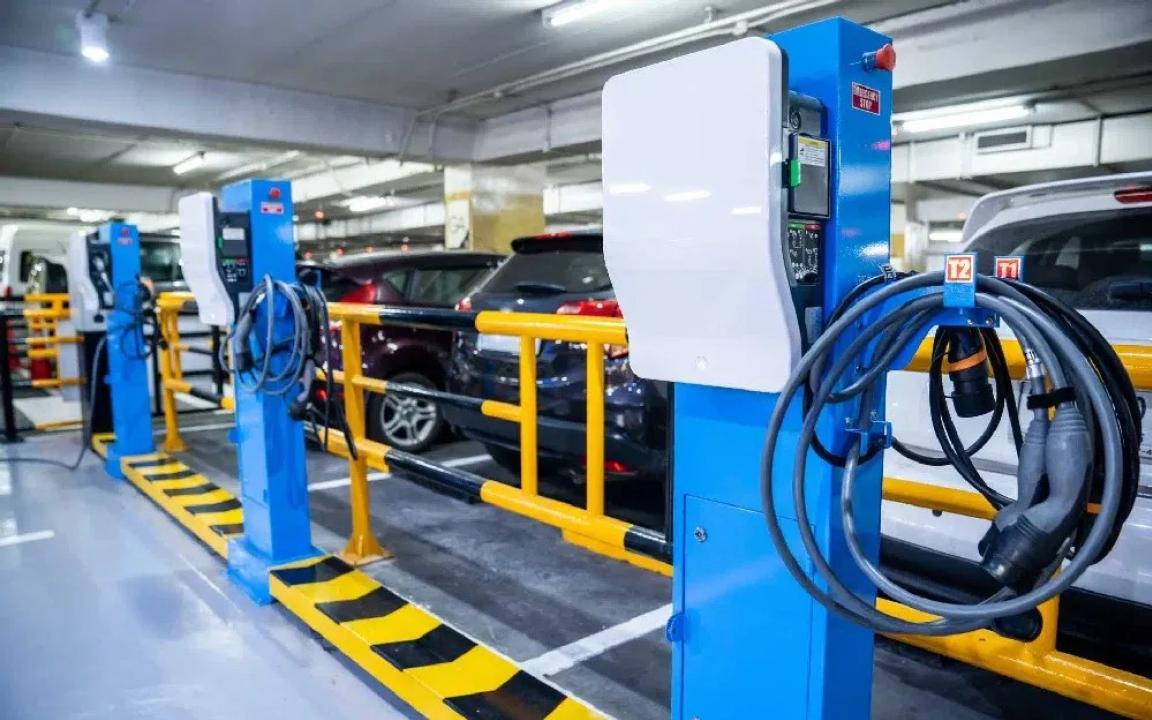As electric vehicles (EVs) continue to gain momentum globally, the need for reliable and efficient charging infrastructure is becoming increasingly important. Commercial EV charging stations, in particular, play a vital role in accelerating the adoption of EVs by providing fast-charging solutions for businesses, fleets, and public spaces. Unlike residential chargers, which are typically limited to 11kW, commercial chargers are designed to deliver between 50kW and over 360kW, allowing for rapid charging of multiple vehicles throughout the day. These systems are built to operate continuously in demanding environments and come equipped with advanced features like power management, payment processing, and remote monitoring.As a leading EV charger manufacturer in China, LiCB Charge offers reliable AC and DC electric vehicle charging stations along with comprehensive charging solutions.
However, choosing the right commercial EV charging station can be a complex decision. Property owners and businesses need to consider various factors such as power infrastructure, construction durability, maintenance requirements, user experience, and adaptability for the future. This article explores the essential considerations to ensure a sound investment and the successful deployment of commercial EV charging stations.
Understanding EV Charging Levels
Before diving into the selection process, it’s important to understand the different charging levels and their suitability for commercial applications:
-
Level 1 Charging: The simplest form of charging, using a standard 120-volt outlet. While accessible and easy to install, its slow charging speed (2-5 miles per hour) makes it unsuitable for most commercial settings. Level 1 is generally reserved for residential use or long-term parking situations, such as overnight charging at home.
-
Level 2 Charging: Operating at 240 volts, these chargers offer faster charging speeds, delivering 20-40 miles of range per hour. Level 2 chargers are ideal for commercial properties like workplaces, shopping centers, or apartment complexes, where vehicles are parked for several hours. They provide a good balance between cost and performance, making them a popular choice.
-
Level 3 Charging (DC Fast Charging): These high-powered chargers, typically running at 480 volts or higher, can provide 60-250 miles of range per hour, depending on the vehicle and charger compatibility. Level 3 chargers are perfect for high-traffic locations like highways, gas stations, and fleet depots, where drivers need a quick charge. However, they come with higher installation and operational costs, making them a significant investment.
Key Factors in Selecting a Commercial EV Charging Station
When choosing the ideal commercial EV charging station, there are several factors to consider:
-
Power Infrastructure and Management
One of the primary concerns when installing commercial EV chargers is ensuring that the property’s electrical infrastructure can support the additional load. Upgrading existing electrical systems can be costly, especially for Level 2 and Level 3 chargers. Property owners should consult with utility providers and electrical engineers to assess the available power capacity and determine if upgrades are necessary. Additionally, advanced power management systems can optimize energy use, preventing grid overload and allowing integration with renewable energy sources like solar panels. -
Construction and Durability
Commercial EV chargers must be designed to withstand harsh weather conditions, such as extreme temperatures, rain, snow, and UV exposure. Materials like stainless steel or powder-coated aluminum ensure durability and longevity. Chargers should also undergo environmental testing to meet industry standards for ingress protection (IP ratings), which indicate resistance to dust and water. -
Maintenance and Serviceability
Minimizing downtime is critical for commercial charging stations, as non-functional units can result in lost revenue. Chargers with modular designs and easily replaceable components streamline maintenance and reduce repair times. Additionally, it’s essential to choose a manufacturer that offers comprehensive support, including remote diagnostics, on-site service, and readily available spare parts. -
User Interface and Payment Systems
Providing a smooth user experience is crucial for encouraging EV adoption. Charging stations should feature user-friendly interfaces, such as touchscreens or mobile apps, that guide customers through the process. Payment processing should support various methods, including credit/debit cards, mobile payments, and RFID cards. Some stations may also offer subscription-based models or integration with loyalty programs, helping to attract more customers and generate additional revenue. -
Futureproofing and Scalability
As the EV industry evolves, so too will charging technologies. To protect their investment, property owners should choose chargers that are futureproof and adaptable to emerging technologies, such as higher power levels and new connector types. Scalability is also an important consideration—selecting a system that allows for easy expansion ensures that businesses can grow their infrastructure as demand for charging increases.
Evaluating Return on Investment (ROI)
Deploying commercial EV charging stations requires a significant investment, so property owners must carefully assess the potential return on investment (ROI). Several factors affect the financial feasibility of a charging station project:
-
Installation Costs: This includes the cost of the equipment, electrical upgrades, and construction. Level 3 chargers, in particular, can be expensive to install due to their high power requirements.
-
Operational Costs: Ongoing expenses such as electricity, maintenance, and software subscriptions must be factored into the ROI calculation.
-
Charging Demand: The level of demand for EV charging at the property will directly affect revenue potential. High-traffic areas, like shopping malls or highway rest stops, are more likely to generate consistent usage.
-
Revenue Opportunities: Beyond charging fees, businesses can explore additional income streams, such as advertising, partnerships with EV manufacturers, or offering premium services like reserved parking spots.
-
Incentives and Rebates: Many governments and utility companies offer incentives to help offset the installation costs of EV chargers. Property owners should research available programs to maximize ROI.
Conclusion
The transition to electric vehicles is well underway, and commercial EV charging stations are a crucial part of this transformation. By carefully evaluating factors such as power infrastructure, construction durability, user experience, and future adaptability, businesses can choose the right charging solution to meet their needs and maximize ROI.
As the demand for EV charging infrastructure continues to rise, businesses that invest in robust, scalable, and futureproof charging systems will not only benefit financially but will also contribute to a greener, more sustainable future. Now is the time for businesses to embrace the opportunities presented by commercial EV charging stations.Know more about Google SEO Directory











